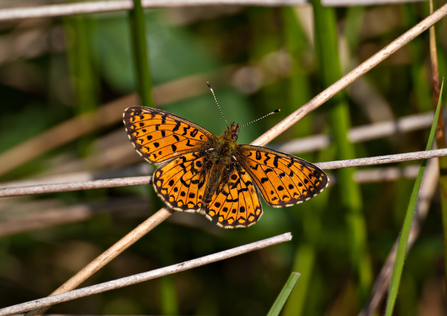With the glorious bursts of spring sunshine last week it was not surprising that our gardens were receiving welcome visits from the first emerging butterflies. Peacocks, Small Tortoiseshell and Commas were all out on the wing bringing a much needed flash of colour and joy into our lives, and a reminder that nature continues even when many aspects of normal life are on hold.
The arrival of these newly emerged insects was timely, corresponding with the UK Butterfly Monitoring Scheme (UKBMS*) releasing the results of its 2019 surveys. Gathered through regular transect surveys across thousands of locations, the results prove that 2019 was the best year for butterflies since 1997. Several species, including Orange-tip and Brimstone butterflies, had their best year ever on record (since the UKBMS began gathering records in 1976).
Although there is much work still to be done to aid the recovery of native butterflies, and ensure populations are robust enough to weather future stochastic events, it is important to acknowledge the success of last year for these valuable pollinators. While this success may be, at least in part, due to the warm and wet conditions of 2019, we are also acutely aware of the huge amount of work Durham Wildlife Trust’s volunteer teams have done to protect and restore butterfly populations in the region.
Recent visitors to Rainton Meadows Nature Reserve will no doubt have noticed the Northern Task Force Volunteers’ coppiced woodland edges, which encourage the growth of a greater diversity of plants, supporting woodland species such as Speckled Wood and Ringlet butterflies.


